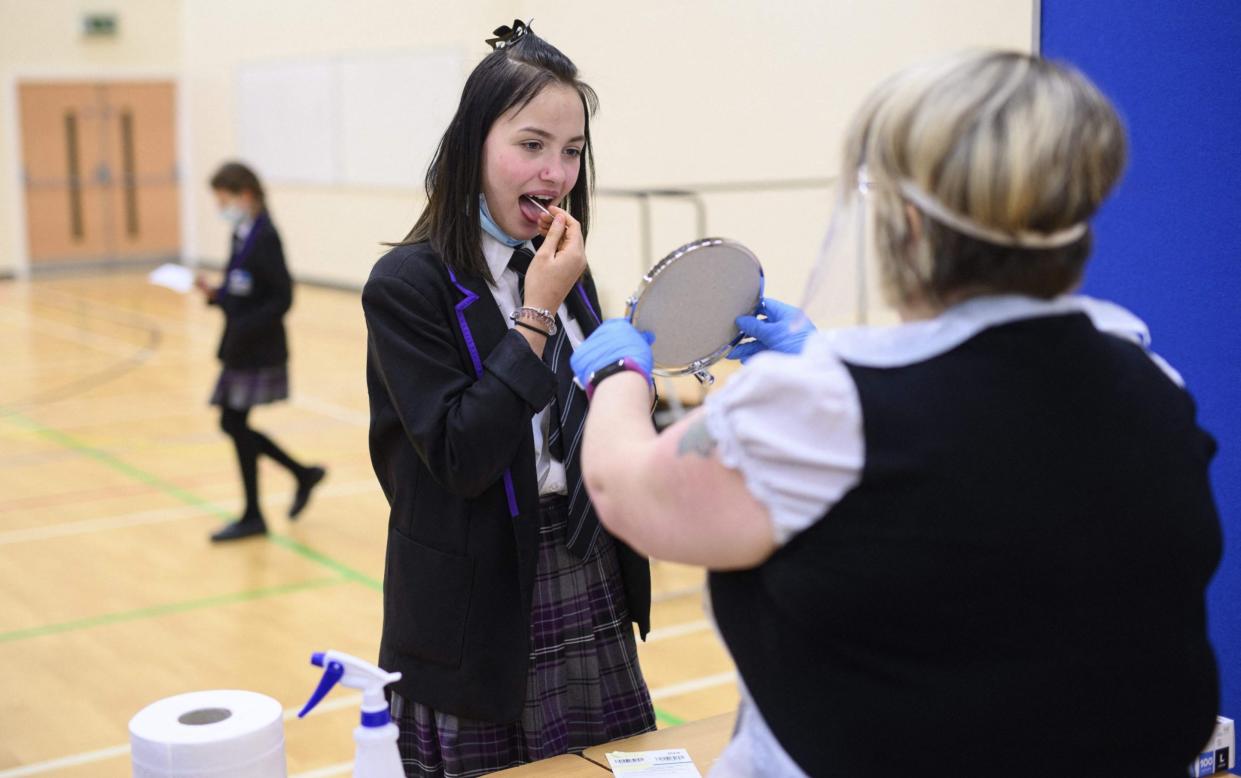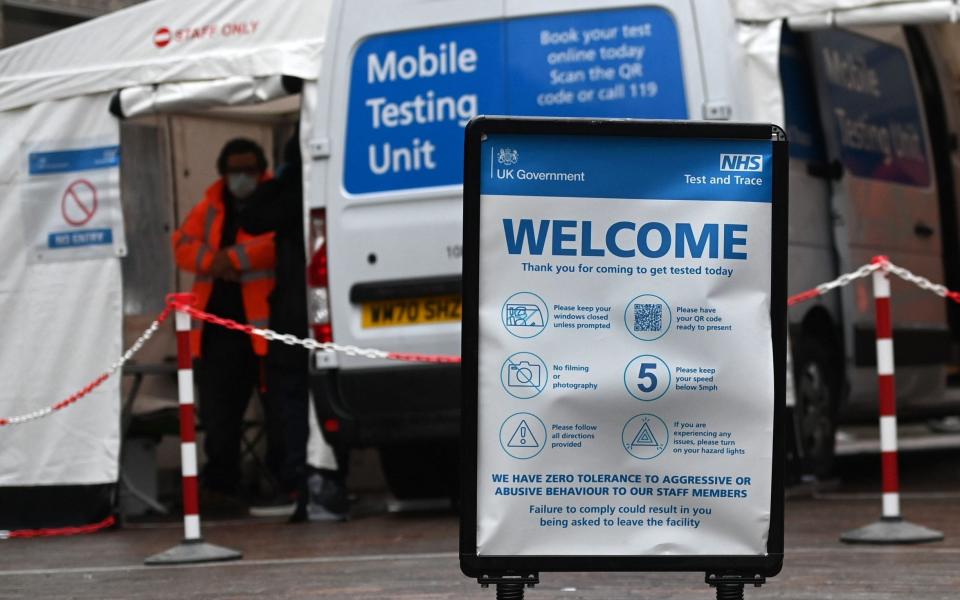PCR vs LFT: Lateral flows can cut Covid isolation but could leave one in 10 with false positive

The move to scrap confirmatory PCR checks for people who test positive for Covid with a lateral flow has reignited the debate about which test is best.
Undoubtedly, allowing people to self-isolate from the first day they test positive by lateral flow will cut down the time spent removed from society as they await their PCR result, but it may also lead to others being forced to stay inside who would have been given the all-clear.
Latest NHS Test and Trace figures from mid-December show that one in 10 lateral flow tests came back negative once checked by PCR. Under the new guidance, all those people would still be forced to self-isolate.
Experts argue that higher prevalence with omicron will mean fewer lateral flow positive tests are wrong.
But a Cochrane Review from last year suggested that at five per cent prevalence - not too dissimilar to the current 1 in 15 cases in England estimated by the Office for National Statistics (ONS) - we would still expect between 10 per cent and six per cent of symptomatic lateral flow positives to be false.
Dr Jac Dinnes, a senior test evaluation methodologist from the University of Birmingham and co-author of the Cochrane Review, said: “With confirmatory PCR, those people could be back to work within a couple of days, depending on testing capacity. Without it they will have to self-isolate according to whatever guideline is in place at the time.”
However, statistician Prof Sir David Spiegelhalter estimates that fewer than two per cent of LFTs will be false positives based on the current prevalence of five per cent.
"The proposed changes seem very sensible," he added.
So what is the difference between lateral flow and PCR, and which should we trust? Here are the pros and cons of each.
Lateral flow
Lateral flow, also known as a rapid antigen test, uses mucus from the nose or throat which is diluted and placed on a porous strip. The sample is pulled along the strip by capillary action where it meets a line of antibodies designed to recognise and bind to Covid-19. When the binding occurs, the line changes colour, indicating a positive test.
The benefit lies in the speed, giving a result in under 30 minutes, rather than waiting up to 72 hours for the results of a PCR.
They are also useful at a population level for finding “hidden” carriers who may be transmitting the virus without knowing because they show no symptoms - an estimated one in three cases.
However, unlike PCRs, they do not amplify the sample so their ability to detect the virus is far lower. It means that while they adequately pick up people while they are at their most infectious, they miss cases where the disease is rising or falling.
They also tend to throw up substantial numbers of false negatives, with around 28 per cent of symptomatic people wrongly told they do not have the virus and 42 per cent of asymptomatic carriers.
Dr Alexander Edwards, an associate professor in biomedical technology, at the University of Reading, added: “Lateral flow tests still have a significantly higher rate of false negatives, and no tests are 100 per cent reliable at ruling out infection. People should remember therefore that a negative test can’t ‘prove’ someone isn’t infected.”
Yet although a negative lateral flow may not mean a person is virus-free, it probably does mean they are unlikely to pass it on to anyone else. The tests work far better at picking up very infectious people, spotting around 95 per cent of positives correctly.
False positives are less likely, but currently in England the real-world false positive rate for LFTs is around 10 per cent when checked against PCR.
Although a small proportion of those confirmatory PCRs will be wrong - probably less than one per cent - scrapping the check will inevitably mean that some people will end up needlessly isolating.
Experts think the problem may grow less important as prevalence increases.
Prof John Edmunds, a professor in the Centre for the Mathematical Modelling of Infectious Diseases, London School of Hygiene & Tropical Medicine, said: “When the prevalence is high – and it is incredibly high at the moment – almost everyone who tests positive with a lateral flow test will be a true positive.
“There is really no need to confirm this with a PCR, a step that not only wastes time but costs a lot of money and uses up laboratory resources that could be better used elsewhere.”
PCR
Sometimes called “molecular photocopying”, PCR (polymerase chain reaction) testing works by looking for a small genetic fragment of a virus and then creating multiple copies.
A swab sample of blood, mucus or saliva is put into a machine with an enzyme called polymerase and dozens of cycles are run until about a billion copies of the genetic material are created.
The lower the number of cycles it takes to find the virus, the stronger the infection, and there is a cut-off threshold where the signal is considered too weak to be an active virus.
But the ability of PCR tests to pick up tiny amounts of virus – even from inactivated or “dead” samples – means a person can test positive long after infectiousness has ended.
Most people infected with coronavirus are contagious for four to eight days, with most transmission occurring two days before symptoms emerge and in the five days afterwards.
But a recent study in The Lancet Microbe found that people shed viral RNA (Ribonucleic acid) for around 17 days even without live virus in the body.
In one case, virus was still being shed 83 days after testing positive - a phenomenon dubbed the “long-tail” of RNA positivity by the testing community.
This can cause major problems when testing. An investigation by the New York Times found that more than 50 per cent of infections picked up by PCR in Massachusetts and New York, had PCR cycle threshold values in the mid-to-upper 30s, indicating very low viral counts.

Recently, many people anecdotally have reported repeatedly testing negative by lateral flow only to test positive on a PCR, which may indicate that their infection, if it exists at all, is extremely low.
The Government has also recently changed swabbing guidance so that people no longer need to take a throat sample, which has lowered the detection rate of lateral flows compared to PCRs.
Getting rid of the confirmatory PCR test may also have other unintended consequences, such as making new variants more difficult to pick up and monitor, as lateral flows do not undergo genotyping and sequencing.
Prof Sheila Bird, former programme leader at the MRC Biostatistics Unit, University of Cambridge, said: “There are two important down-sides if PCR-confirmation is not required.
“Firstly, there is a loss of information on both cycle-threshold value - which acts as proxy for viral load - and genomic variation - which tells us about new variants - as the PCR tests can analyse these whereas lateral flows do not.
“Secondly without PCR confirmatory tests there could be a loss of timely information on positive diagnoses if those who test LFD-positive are less inclined to report their positive-test-result because there is no follow-up action to be taken.”
So scrapping PCR checks will have benefits, but also consequences. Only time will tell if it will help or hinder the current staffing crisis.

 Yahoo News
Yahoo News 
